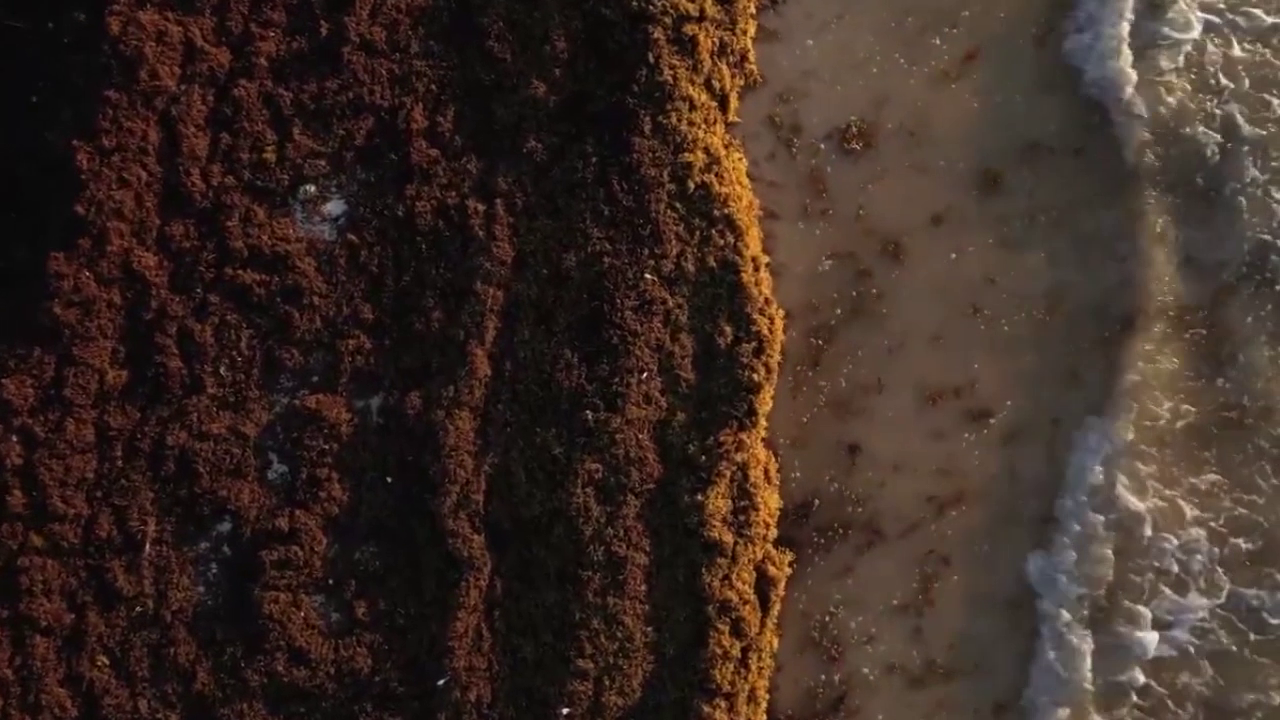It’s that time of year again in San Pedro when the sun gets hotter, the winds pick up, and the beaches start disappearing under mountains of seaweed. We’re talking about the annual sargassum invasion, and it’s hitting hard. But while high-tech solutions have come and gone, the San Pedro Town Council is going old-school: shovels, wheelbarrows, and sheer determination. Since February, they’ve been tackling the tide of seaweed head-on. News Five’s Britney Gordon takes us to the frontlines of this sandy, salty cleanup battle.
Belize’s beaches are a hot spot for Easter and summer getaways—sun, sand, and sea drawing crowds from near and far. But just as the vacation buzz kicks in, so does an unwelcome guest: sargassum. This brown, smelly seaweed rolls in by the ton, covering the coastline and turning paradise into a cleanup zone. It’s stubborn, it stinks, and it’s back.
Valentine Rosado, Biodiversity Scientist
“It is usually around closer to Easter, summertime, you know, when the winds pick up, when the sea temperatures are higher. When everyone wants to go to the beach because it’s super hot, that’s when the sargassum is blooming out there. Right. And when the wind picks up, it is just bringing the sargassum from way out there in the Caribbean up to our shores.”
Most of the sargassum drifting through the Caribbean heads north toward Cancun, but some of it still finds its way to Belize. According to the latest forecast, San Pedro and Caye Caulker are expected to see heavy buildups. In response, the San Pedro Town Council has stepped up cleanup efforts and brought in biodiversity expert Valentine Rosado to help tackle the growing problem.
“As an island, we have been dealing with Sargassum for, I believe we’re on year sixteen, maybe year seventeen right now. So the. San Pedro Town Council is focused on town core, which is about a mile from the bridge all the way to the library. And that’s where the focus of the tongue console has been. My involvement has been mostly to come in and advise in figuring out how to be a lot more, um, a little bit more efficient with the cleanup, and then also to come up with some baseline information that would help us look at lessons learned here on the island, other areas and how to tackle the situation as much as possible. Because unfortunately, we get it every year, and if nothing’s done about it, then we live here, we have to smell it every year. And it’s not, it’s not a nice thing.”
Valentine Rosado
“The main strategy is getting out of the water as quick as possible. I know that one of the big challenges that we keep seeing is all these solutions that people try to come up with big machinery, you know, how can we make the raso disappear? How can we have some kind of bigger effort? And from what we have been looking at, the main thing is getting out of the water and manual is cheaper and a lot more efficient. It might not seem that way, but the thing is that it becomes overwhelming when we have areas that there’s no focus and then one day pass. Two day pass. Three day pass, and you have that whole a accumulation of sargassum. It begins to smell and it becomes, it begins to be super overwhelming.”
Valentine Rosado
“So what we explored here is looking at what traditionally has been done with sargassum. Traditionally, you take Sargassum off the beach and use it to fill low lying areas. I’ve done a lot of research online to figure out, from a health perspective, what are the recommendations. You know, there’s concern about heavy metals coming in this sargassum, but in the absence of any other major solution, it seems like an option that is feasible and once we use it in an era where we’re not growing fruits and vegetables that we’re going to eat immediately, then the concern about heavy metals seems to not be an immediate issue right now. However, what we’re doing in the deposition site is we’re doing it as long term monitor so we know exactly where the sarum is going, and it gives us that location where you can monitor long term to really continue tracking whether there gonna be any health implications later on.”
The sargassum removal efforts will continue until the end of the season.
